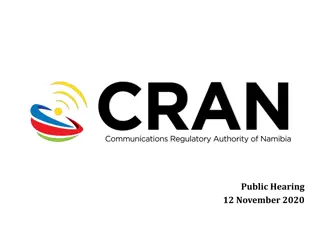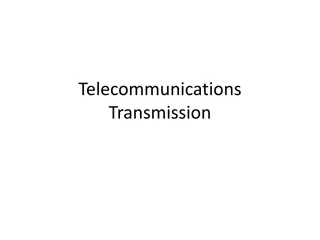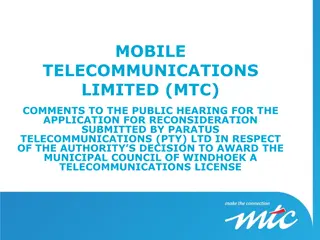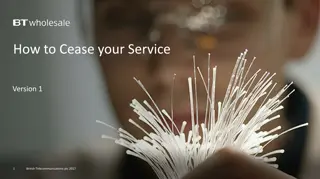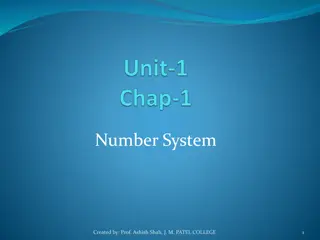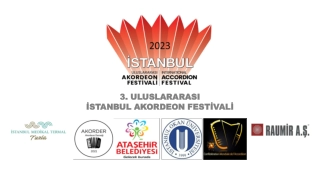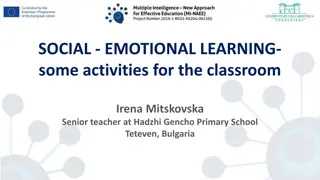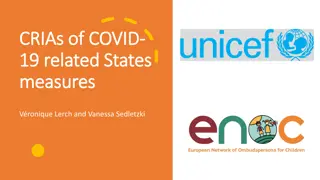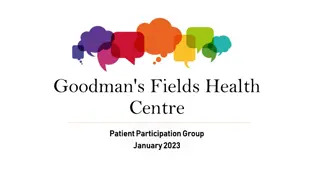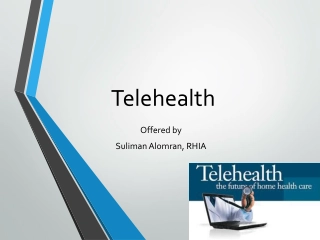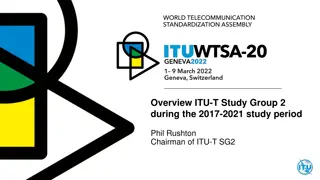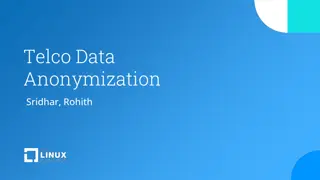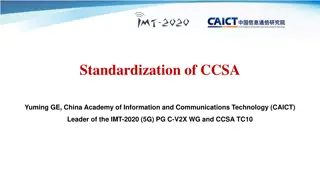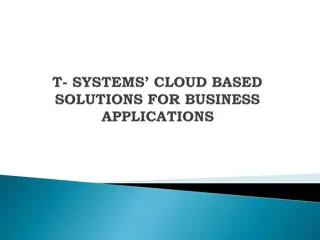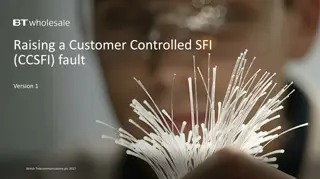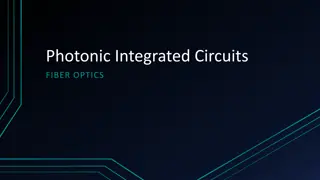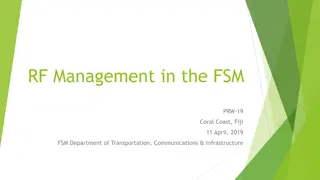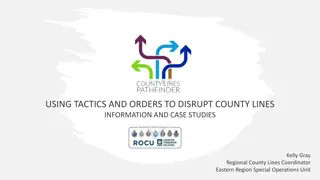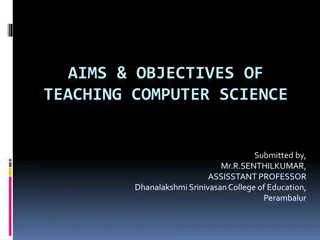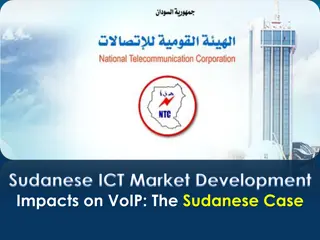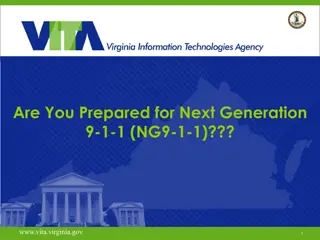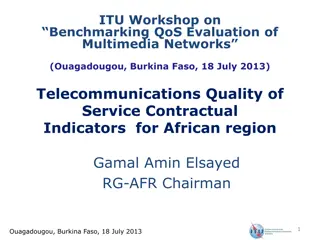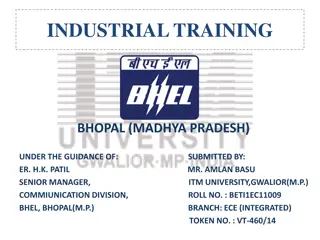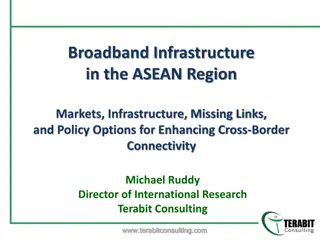Advanced Telecommunications Solutions by VIVACOM in Bulgaria
VIVACOM, the largest operator in Bulgaria, offers advanced telecommunications solutions with over 5 million services to private and business clients. They provide high-tech solutions in transport, environment, security, services, and smart education to enhance quality and efficiency.
Download Presentation

Please find below an Image/Link to download the presentation.
The content on the website is provided AS IS for your information and personal use only. It may not be sold, licensed, or shared on other websites without obtaining consent from the author. Download presentation by click this link. If you encounter any issues during the download, it is possible that the publisher has removed the file from their server.
E N D
Presentation Transcript
- CEF 2019, Sep 5th
About VIVACOM: VIVACOM has many years of experience in advanced telecommunications solutions at expert level. The company is the largest operator in Bulgaria, offering over 5 million services to its private and business clients. More than 5,000 employees work hard to ensure that over 2 million customers receive the highest quality of service and high- tech next-generation solutions.
Transport and mobility Bike sharing Infrastructure and service for bike sharing City transport Automatic Vehicle Location and Fleet Management System Passenger Information System automated electronic billing system E- ticketing Traffic monitoring Traffic management and control Access to real time transportation- data Smart Parking Parking occupancy and parking availability 3
Environment and Energy Weather stations Measurement of Air Pollution Control and access to Air Pollution- data Waste Management Data collection and analysis Optimization of container collection Real time inventory of waste containers Street lighting management Decreasing of electricity consummation 4
Security Video Surveillance Real time data Control, prevention and security Traffic control Traffic regulation Increasing the efficiency of road infrastructure Disaster and accident prevention Monitoring of critical infrastructure /rivers and dams/ Timely signaling to citizens through an appropriate information environment 5
Services Municipalities information- mobile apps and web pages Easy access for citizens to useful information about the Municipality /web sites, mobile applications, local content/ E- services for citizens E- Government E- Municipality Broadband internet access Equality of all Municipalities and Municipal Services in their access to appropriate information infrastructure Public Wi-Fi zones 6
Smart education Access to broadband services Providing the necessary infrastructure Digital content Access to diverse content and best practices in education IT Infrastructure Cloud infrastructure Applications Services 7
5G expectations 5G - an ultimate game changer for: Industry digital transformation One network multiple industries Foundation for efficient industries Mass machine type of communications Enhanced Customer experience BB experience everywhere, anytime 10 x faster speeds and 10 x quicker response Personalized TV viewing Network Society Building Smart cities e-skills and e-services Cyber security 9
5G usage main scenarios Enhanced Mobile Broadband (eMBB) Extension to existing 4G broadband services will be the first commercial 5G set of services to launch - Higher capacity in dense populated areas - Enhanced connectivity Fix wireless in rural and suburb areas - Increased mobility mobile broadband services in moving vehicles Massive Machine Type Communications (mMTC) Narrowband Internet access for sensing, metering, and monitoring devices - Evolution of the existing eMTC and NB-IoT technologies - Should be able to cope with expected up to 1 million low-power nodes per square kilometer Ultra-Reliable and Low Latency Communications Services for latency sensitive applications third set of commercial 5G services - Factory automation - Autonomous cars - Autonomous public transport - Tele medicine One of the most innovative aspects of the 5G architecture will be its reliance on 5G network slicing, which will let operators provide portions of their networks for specific customer uses cases whether that use case is the smart home, the Internet of Things (IoT) factory, the connected car, or the smart energy grid. This will give the ability to deploy only the functions necessary to support particular customers and particular market segments 10
5G spectrum To address different requirements of 5G usage scenarios, full set of "high", "medium" and "low" frequencies, should be made available by national regulators 24.5-27.5GHz At least 800MHz per network 5G capacity only Significant network densification with fiber backhaul 3.4-3.8GHz C-Band Major 5G band At least 100MHz per network Best balance between coverage and capacity Network densification with fiber backhaul 700/800/900MHz 700MHz is 5G coverage band with low capacity 800MHz will remain for 4G services and used for 5G in a later stage 900MHz will remain 2G/3G LTE at 800MHz is very important for voice (5G fallback on VoLTE) 11
5G deployment challenges Spectrum should be available and affordable Coverage especially rural and roads: 700MHz band Combination of 5G@700MHz and 4G@800MHz is essential for the deployment of the 5G coverage layer Main implementation: 3.6GHz band With other already available LTE bands (e.g. 1800, 2100 and 2600MHz) EMF regulation and proper communication New common EU regulation of the EMF standards/calculations is needed It should be scientifically based and should take into account the specifics of each technology using those bands Health fears from 5G should be addressed. At the end what EMF could do is function of frequency and radiated power, not the technology Fast deployment to be possible Dedicated regulation for building new communication infrastructure and addition of new technologies - Upgrade of existing networks is needed - Densification of the networks is needed - New regulation should be dedicated and relaxed significantly Public-private partnership for rural and remote areas - Infrastructure and equipment funding with European, state or municipalities resources 12
Thank you 13



